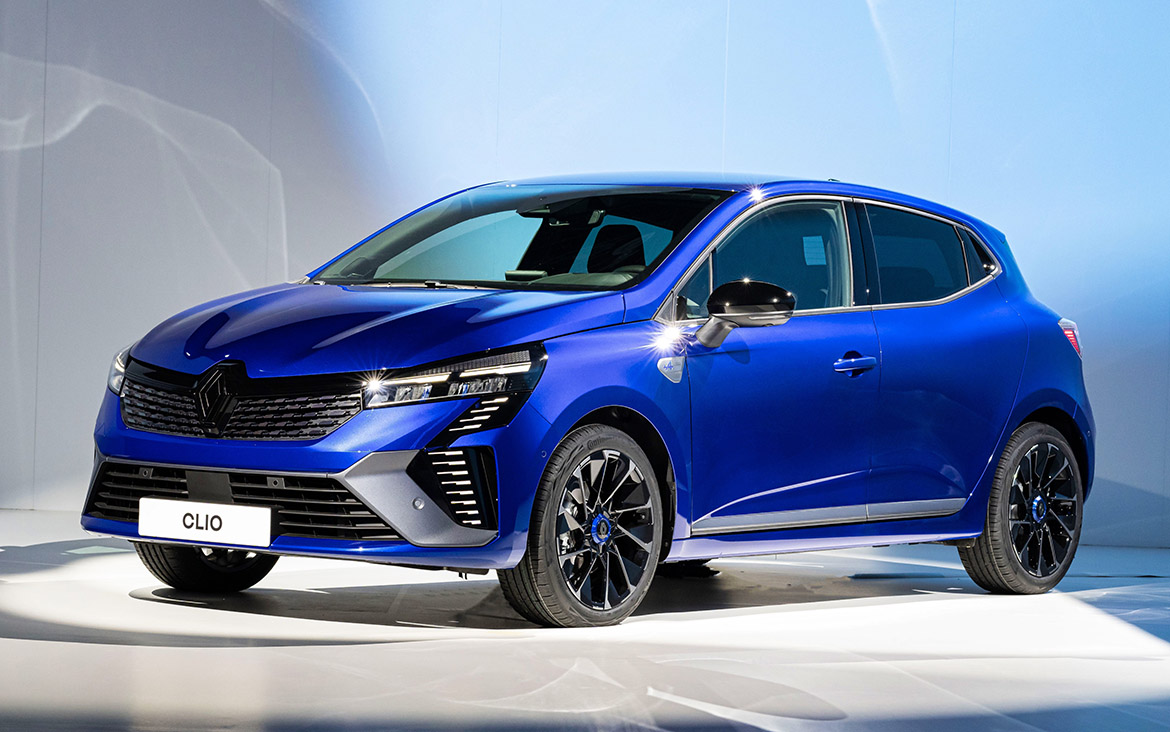Not a completely new Renault Clio, but a thorough restyling that anticipates some of the styling and content themes that the company will soon extend to the rest of its production. This is how the fifth generation of Renault’s best seller faces the turning point in its career, reaching the roads towards the end of the year. New Clio is the manifesto of a “techno” and “green” language that does not, however, completely erase themes and inspirations from the previous series: at the front, which is the most deeply redesigned part, the “Nouvel’R” logo stands out in satin chrome, with new graphics made up by two side-by-side/overlapping diamonds. It is set on a support from which two horizontal bars depart to connect to the headlights, but slimmer, over a grille with a digital weave that is increasingly in vogue today, shaded towards the edges thanks to a play on shapes. The lower part instead retains its inspiration from the world of racing.
The most characteristic elements are however on the two sides of the front end itself: the large “mouths” of the previous model are replaced by a complex vertical pattern incorporating segmented daytime running lights, a theme also picked up inside the headlights themselves where the “C-Shape”, typical of the last generation of Renault models, disappears. Inside, the groups of lamps, all strictly LED, go from three to a maximum of five depending on the trim level.
The shapes of the bodywork otherwise remain the same, like the bonnet lines and the indentation at the top of the mudguards in which logos identify particular trim levels such as Esprit Alpine, the new sports trim level launched on the Austral. At the rear, apart from the new logo, the only reshaped element is the rear shield with two grilles at the sides and a surface finish that changes from matte black to glossy black and to grey, again depending on the equipment level. The most noticeable difference between one version and the other, however, is in the diffusers, which also include the exhausts on the versions with just endothermic engines, but are absent on the hybrid version.
In the cabin, the changes are more subtle in terms of aesthetics and more evident in terms of content, meaning that this is where the ecological soul is most manifested through fabrics and materials with a low environmental impact: natural leather has been entirely abolished while the dashboard, door panels and seats, on the Tecno version in particular, sport upholstery made of 60 per cent organic cellulose-based fabric.













